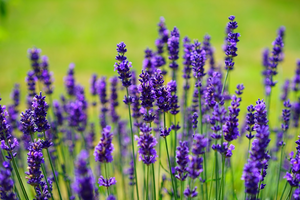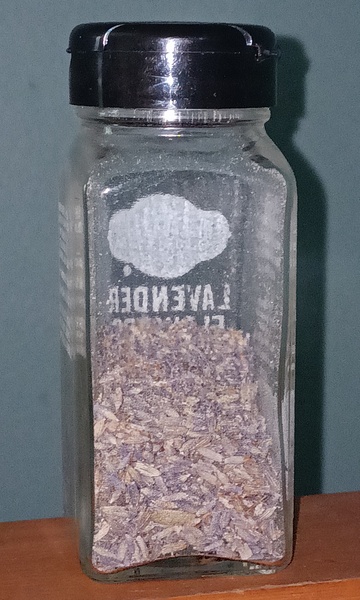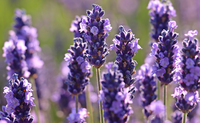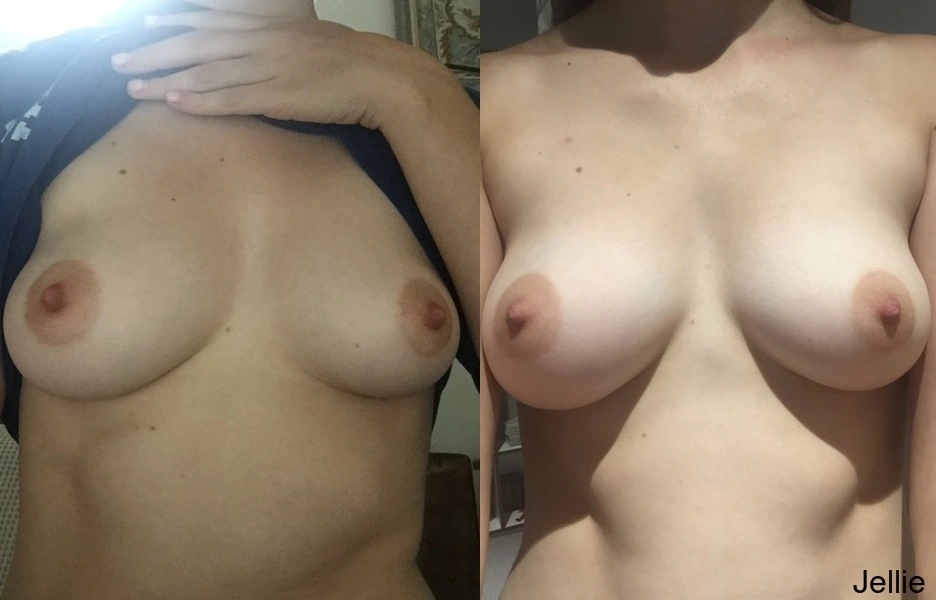Lavender

This is about lavender's hormonal properties for breast enlargement and hormone balance. There are suggestions on its use depending on the timing of the menstrual cycle.
Etymology
The genus of Lavender goes by the scientific name of Lavandula. Like Mentha, it also belongs to the Lamiaceae or Mint family. Labiatae is another name for the Mint family.
Properties

Lavender products have been linked to gynecomastia, but those effects are likely based on its actions on top of different hormone levels. Lavandula has a reputation of being estrogenic and of modulating dihydrotestosterone (DHT). Oil of lavender upregulates ERβ in the spleen, so it is likely that it also upregulates ERβ in the reproductive tract too.
Anecdotal evidence
Lavender has a reputation for being estrogenic, and having DHT lowering ability. However, lavender's effects on the body are dependent on menstrual phase, amount taken and presence of other herbs. This can be explained by its sensitizing effects on ERβ.

Lavender promotes the menstrual cycle, suggesting it has mild androgenic properties. In small doses, depending on which other herb it is taken with, and which phase it is taken, lavender can cause androgen symptoms such as acne and body hair.
Lavandula use has also shown estrogenic effects, including lowering body hair, which have been circumstantial. A sign of lavender's estrogenic properties is its potential to cause elongation of breast appearance, suggesting lavender has indirect effects on Estrogen Receptor Alpha (ER⍺).
Use
Lavandula for breast enhancement
Lavender's use for breast enhancement is effective during mid-secretory phase. For mid-proliferative, Lavandula requires the right complementary herbs to cause breast growth. It has caused bust enhancement during menses inconsistently, but it's not recommended here. Lavandula is not recommended during premenstrual.
Lavandula or herbs with similar properties are in herb programs based on menstrual phases. There must be balance throughout phases, and combinations of herbs help the body acheive balance for health, breast growth and hip growth. It's important that menses is light and short. Also, preventing an excess of negative symptoms for menses helps set the balance for proliferative phase. Luteal phase uses a different combination of herbs than proliferative phase for symptoms. For a simplified herb schedule, where there's commonality of herb recommendations for symptoms such as swelling and signs of excess estrogen, use nonmenses. BCP01 is a composite page of pieces of different programs on birth control or IUD use.
Herb timing and combinations' success for breast enhancement relies on menstrual phases. Descriptions and pictures of results from herb combination use can be seen in programs. For more guidance, see guide, or hirsutism-topic.
Similar herbs

Sunflower and pumpkin seed have identical effects to lavender, and are better substitutes.
Precautions
See precautions for more details of care to be taken with herb use. Proper nutrition is a consideration for health. Also, check for the latest blog updates about herb and hormone safety.
It is very important that menses be light and not prolonged.
If you have hirsutism, PCOS, hot-flashes, other signs of hormone imbalances, see estrogen-imbalance, and hirsutism program journals at hirusitism-topic before trying herbs.
Herb concentrates can be tens of times more potent by weight than herbs in solid form. This can easily lead to hormone imbalances. For this reason, concentrate extracts are not recommended for extended or excessive internal use, especially during fertility years. Concentrates shouldn't be used to overcome plateaus. Another issue with herbal extracts, is that they may not have the full range of properties of the herb. Essential oils are not recommended for breast enhancement. If opting to use herbal extracts, use food grade extracts, with no more than 1 drop at a time diluted in water.
More


For the latest herb programs and how to get started, see: guide. Pictures of breast enhancement can be seen in the program journals of Anon02, Anon08, Anon09, Bubblemelon and Jellie.
For resources on hips and butt enhancement, see: /appendix/hips-butt-enhancement and /appendix/kettlebell.
breast-endocrinology.pdf describes the science of breast development and endocrinology. It also describes symptoms related to hormone imbalances. Biology and hormone imbalances are excerpts from this ebook. breast-endocrinology.pdf uses a Creative Commons (CC BY-ND 4.0) license.
Breast.is blog
References:
- Prepubertal gynecomastia linked to lavender and tea tree oils. https://www.ncbi.nlm.nih.gov/pubmed/17267908.
- Physiological effects and mechanisms of action of endocrine disrupting chemicals that alter estrogen signaling. https://www.ncbi.nlm.nih.gov/pmc/articles/PMC4782146/.
- Unraveling the Rat Intestine, Spleen and Liver Genome-Wide Transcriptome after the Oral Administration of Lavender Oil by a Two-Color Dye-Swap DNA Microarray Approach. https://www.ncbi.nlm.nih.gov/pmc/articles/PMC4498626/.
Etymology & Definitions:
- USDA Plant profile: Lavandula. https://plants.usda.gov/core/profile?symbol=LAVAN.
- U.S. National Plant Germplasm System: Lavandula. https://npgsweb.ars-grin.gov/gringlobal/taxonomygenus.aspx?id=6567.
- U.S. National Plant Germplasm System: Lamiaceae. https://npgsweb.ars-grin.gov/gringlobal/taxonomyfamily.aspx?id=619.
Resources:
- Wellness Mama. http://wellnessmama.com/26519/risks-essential-oils/.
